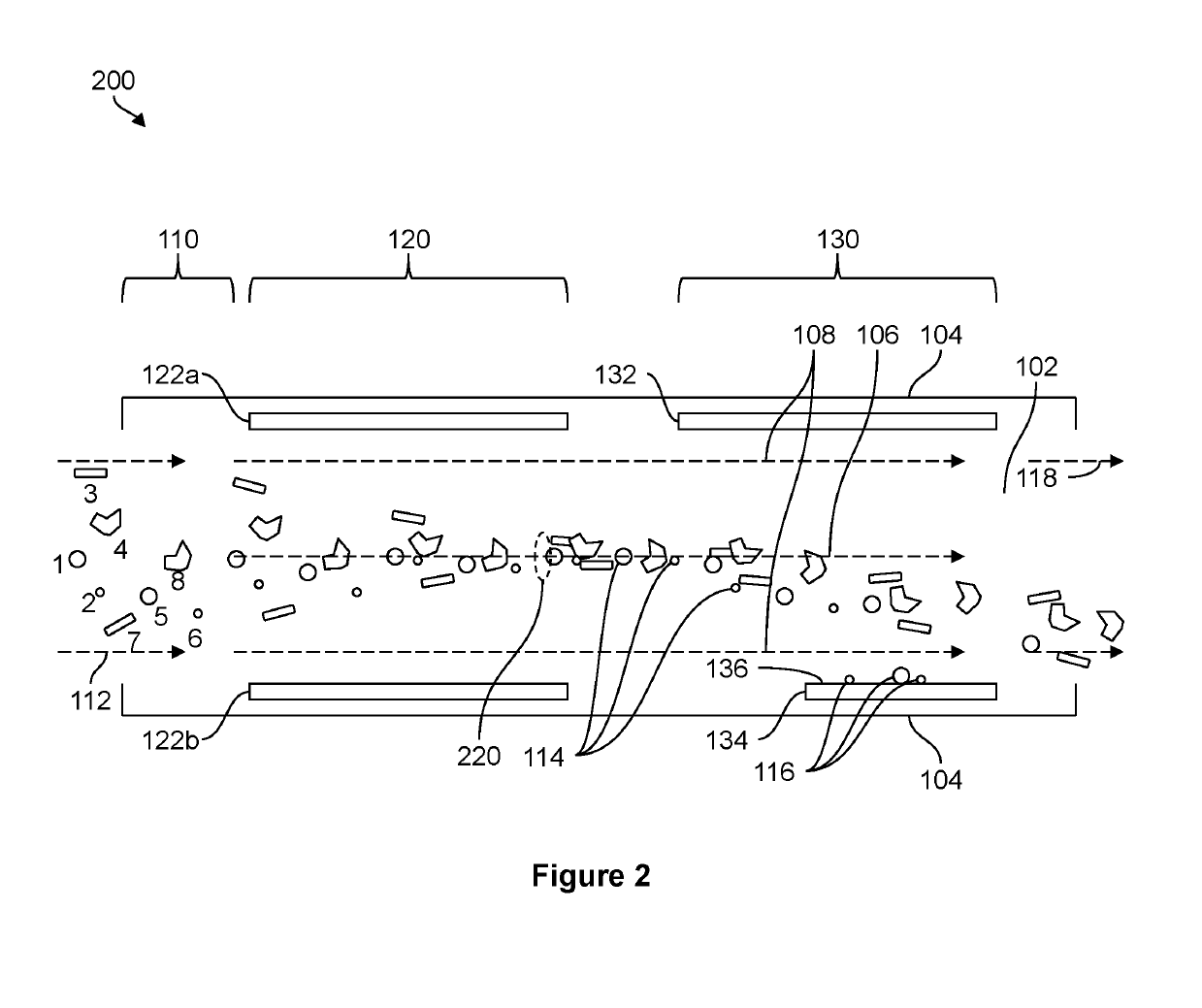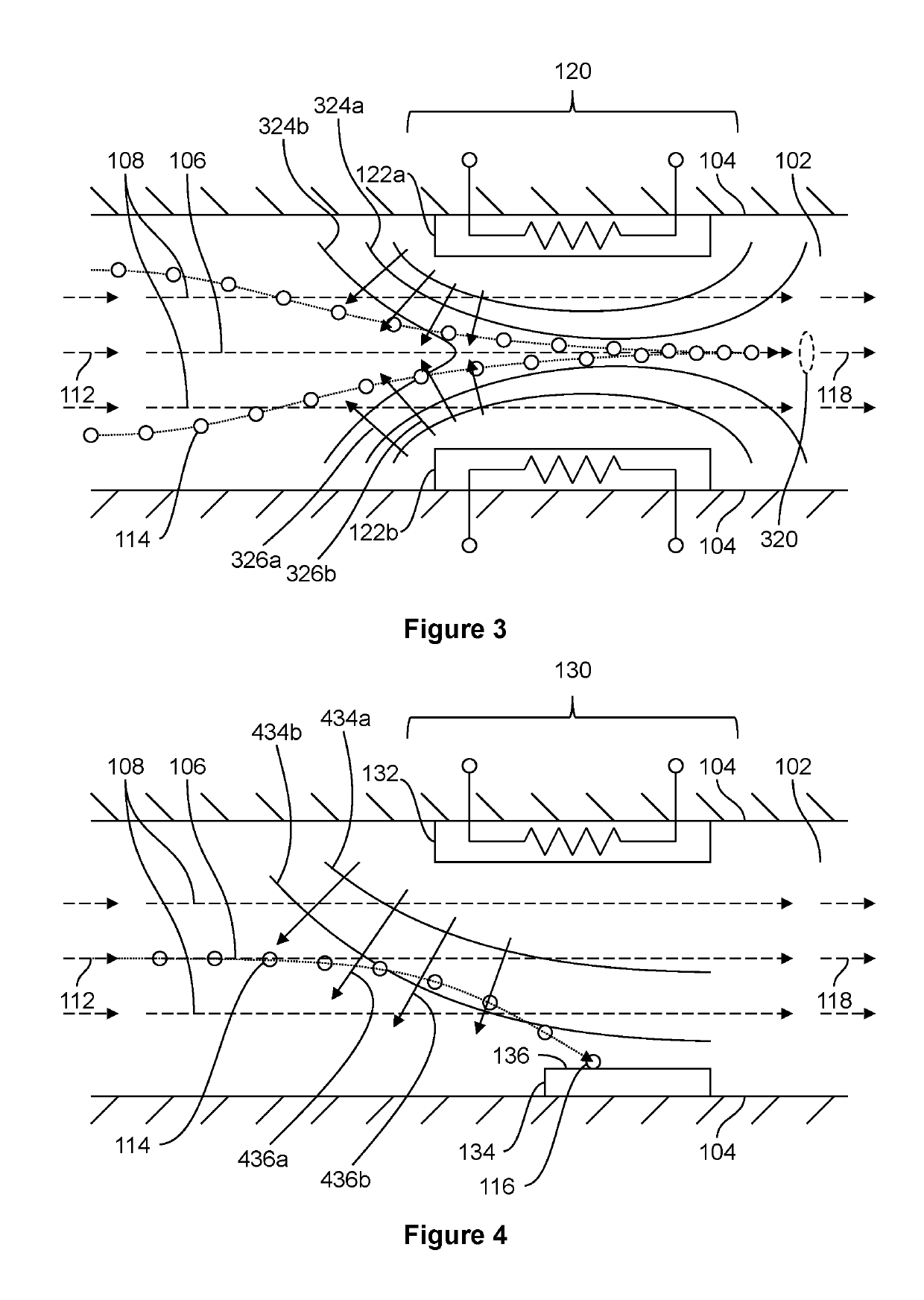Thermophoretic particle detection system with variable channel geometry
a technology of thermophoretic particle and variable channel geometry, which is applied in the field of particulatematter detection, can solve the problems of poor air quality and potentially adverse health effects, airborne particles with a diameter of 2.5 microns or less (often termed pm2.5) tend to be particularly problematic, and damage to other organs, and achieves a larger thermophoretic force and higher thermal gradient
- Summary
- Abstract
- Description
- Claims
- Application Information
AI Technical Summary
Benefits of technology
Problems solved by technology
Method used
Image
Examples
Embodiment Construction
[0039]The techniques, methods, devices, and systems disclosed herein may result in smaller, simpler and lower cost airborne particle detection and monitoring devices that allow mass-market use in homes, buildings, workplace environments, industrial facilities, indoor and outdoor environments, and personal air-quality monitors. Improved airborne particle detection systems and methods may be used in a variety of devices including cellular phones, smartphones, laptop and tablet computers, thermostats, voice-activated tabletop monitors, wearable devices such as watches and personal health monitors, air monitors for green buildings and home-automation systems, vehicle cabin monitoring, smoke detectors and protective devices such as face masks and eyeglasses, among other applications.
[0040]Improved air particle monitoring devices can be facilitated by systems and methods configured to use thermophoretic forces. Such systems and methods can produce various effects useful for such improved ...
PUM
 Login to View More
Login to View More Abstract
Description
Claims
Application Information
 Login to View More
Login to View More - R&D
- Intellectual Property
- Life Sciences
- Materials
- Tech Scout
- Unparalleled Data Quality
- Higher Quality Content
- 60% Fewer Hallucinations
Browse by: Latest US Patents, China's latest patents, Technical Efficacy Thesaurus, Application Domain, Technology Topic, Popular Technical Reports.
© 2025 PatSnap. All rights reserved.Legal|Privacy policy|Modern Slavery Act Transparency Statement|Sitemap|About US| Contact US: help@patsnap.com



